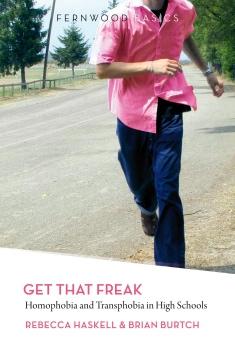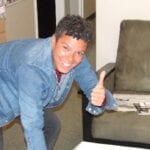Queer-identified youth point mostly to exclusion and other subtle forms of homophobia rather than physical bashing as the key problems in schools, according to the authors of Get That Freak: Homophobia and Transphobia in High Schools.
Some of the 16 young people interviewed did talk about “really severe, physical forms of homophobia,” says co-author Rebecca Haskell. But every one of them spoke about everyday incidents like anti-gay graffiti on lockers and gay-straight alliance posters, as well as the pervasiveness of homophobic put-downs like “fag” and “dyke.”
“There would be debates about same-sex marriage in classrooms, and homophobic things would be said under the guise of personal opinion, and that would go unchallenged,” Haskell notes.
And yet, Haskell adds, most of the students interviewed, ranging in age from 19 to 23, indicated they had support in school and described their high school experience as positive. Haskell says having a teacher or a supportive group of friends step up and challenge homophobia when it occurred made all the difference.
“Either they intervened when someone said something homophobic, or from the get-go said, ‘That language isn’t acceptable in my classroom; it’s hurtful language, and it’s not okay,’ or they had counsellors who at least they could talk to, [to] kind of offload and get some support,” Haskell elaborates.
“That’s really important for students who feel they have nobody,” says Brian Burtch, Haskell’s collaborator.
But Haskell notes that teachers very often don’t intervene to stop homophobia because they feel they won’t be supported if they do.Teachers want clear guidelines from school administrators and the education ministry that they must intervene, Haskell continues, “because they see it as a controversial issue and one that may come back to bite them.”
Just as important is inclusion of queer-specific topics in school curriculum, Burtch adds. “It shouldn’t be something that is secreted or sequestered into, say, Social Justice 12 that is optional for students, but rather embedded in curriculum,” he says.
One thing that students emphasized, Burtch continues, is their need to be taken seriously when they bring the subject up, instead of being brushed off.
“Some people are going to be very insistent that homosexuality is not a healthy approach,” Burtch acknowledges, but “other people are going to be extremely gay-positive, [and] I’d even go further and say, be sex-positive.”
One of the lingering problems, he notes, is schools’ unwillingness to “cope with the fact that people do have desires and in most cases are sexual beings. “I’d say [that’s] part of the work: how do we bring these things in?” he says. “It’s definitely going to engender some resistance, and I don’t see that as entirely unhealthy.”
“I think you have to deal with that,” Burtch adds.
Tackling homophobia and transphobia has to be a broad-based, constant effort, Haskell agrees, not a one-speaker-at-one-assembly approach.
“It’s really important we find ways, every day, to celebrate and reflect the community that is actually in BC,” she says.


 Why you can trust Xtra
Why you can trust Xtra


